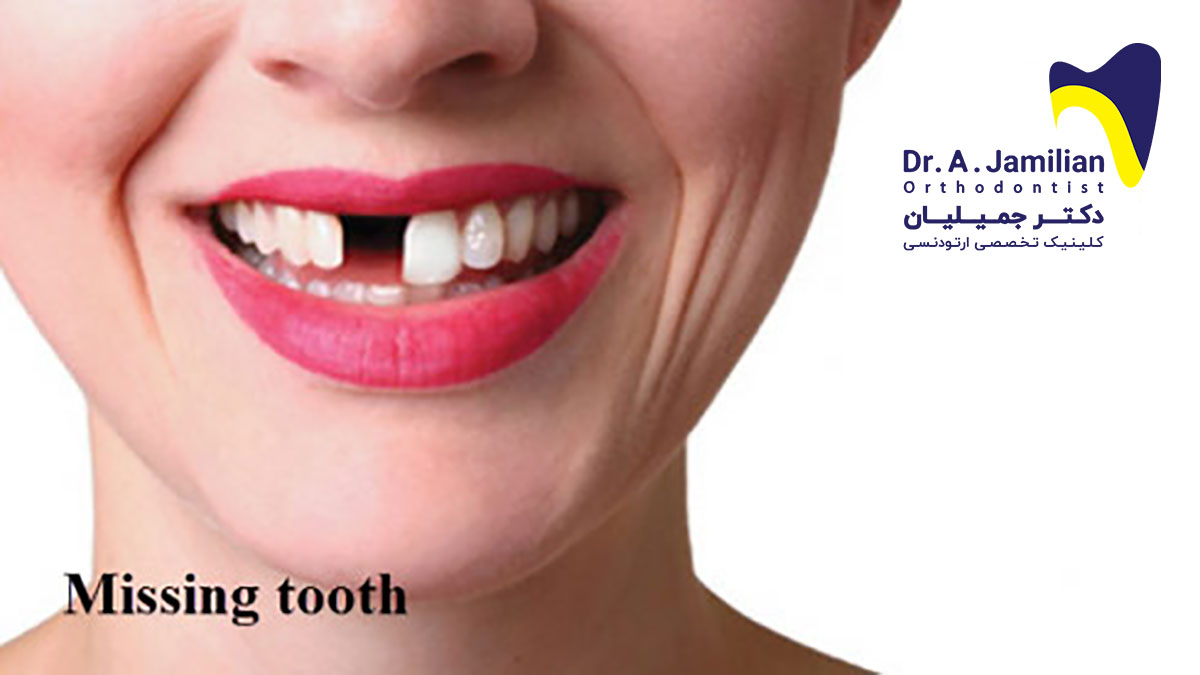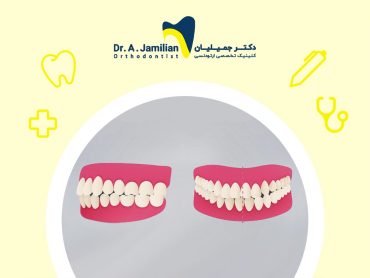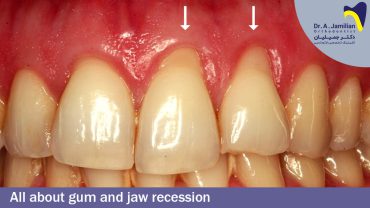Sometimes the combination of the large dental arch and small teeth results in teeth spacing. In some patients, teeth spacing could be caused by missing one or two teeth. Missing teeth might be congenital or caused by an accident. These cases could be treated by two procedures explained hereinbelow.
Missing Teeth & Two Treatment Procedures
There are two main procedures to treat missing teeth:

First Procedure: Orthodontics
In the first procedure, the posterior teeth could be moved forward and the diastema between anterior teeth will be corrected, carrying out this procedure depends on the patient’s condition, this procedure is called Space closure. This is the best treatment procedure which is preferred over other procedures for the majority of cases. Because in this procedure the space between teeth is filled with the patient’s other teeth and no implant or foreign body is placed in the patient’s mouth. Otherwise, implants should be placed in the spaces of the missing teeth.
Second Procedure: Implant
In most cases, closing the missing space is preferred to placing implants, however, the final treatment plan should be carried out on the basis of the patient’s condition, missing teeth or crowded teeth, patient’s side view, anterior teeth protrusion, and radiographic images.
The followings are images of a patient with congenital missing of two upper teeth. With the passage of time, the current teeth have replaced the missing ones which caused space between the anterior teeth. This patient was treated without implant via the Space Closure procedure.
For more information please read the specialized article on the Internet by my Italian colleagues and I. It is worth noting that this is a modern procedure and I have proposed this procedure in the Congress of the European Orthodontic Society.

Missing Teeth Complication
This complication is classified under two inherent or acquired categories. Inherent factors include genetic and congenital problems. Acquired factors include dental trauma, tooth decay, and poor oral hygiene. The following lead to tooth decay which finally results in losing teeth: Periodontal diseases, root and gum infections, dental cyst, and poor oral hygiene.
An approximate 20 percent of patients are missing one or more teeth as a consequence of one of the above reasons. Most of these patients are missing one or two permanent teeth. In addition, some of these patients lose 3 to 6 permanent teeth due to acquired factors.
Missing Teeth in Children
As already mentioned, losing one or more permanent teeth is called missing teeth complications. The prevalence of congenital missing tooth is 1 percent among children. Most of the time these malocclusions could be corrected in childhood to avoid the orthodontics costs in the future.
Taking care of children’s teeth and regularly visiting dentists and orthodontists is of great importance in preventing missing tooth complications in the children. Teach your child the proper brushing techniques and practicing oral hygiene. Teach your child to protect their teeth during sports and while playing. In case your child is prone to dental trauma, provide mouth guards for them to use during sports and while playing.
In the case of missing tooth malocclusion in children, you could visit an orthodontist when they are 7 years old. Treating this type of malocclusion could be carried out in the early stages with simple orthodontics appliances. Therefore, your child will benefit from straight and aligned teeth when older.
What is the Best Way to Replace the Missing Tooth?
The orthodontist chooses the missing teeth treatment procedure on the basis of the type of malocclusion and the number of missing teeth. The first advice is to close the space between teeth with orthodontics Considering that having natural teeth has its own advantages, by taking good care of your natural teeth you could enjoy lifelong healthy teeth.
When the teeth are too small and/or the number of missing teeth is too much, the orthodontist regulates the space between the teeth by orthodontics appliances and then inserts the tooth or implant between remaining spaces between the teeth.
Missing Teeth Side Effects
When a tooth is missing it causes an extra space between teeth and in the long term, teeth will move and the result will be misaligned teeth. Also, gums could become infected through direct contact with food or beverages. And it will result in erosion of side teeth and erosion and deformation of the jawbone.
You can see the link of the article in below:
Missing upper incisors: a retrospective study of orthodontic space closure versus implant


